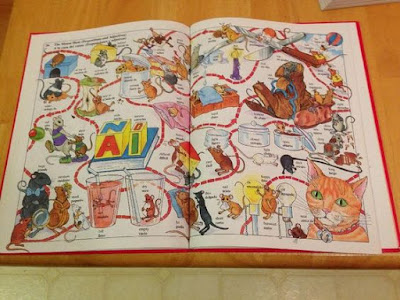{Affiliate links used.}
Picture dictionaries with scenes can be used in a variety of ways. Here is a list of ideas:
{NOTE: All of these activities are done in the target language...on both the teacher and student side.}
1. Ask where certain items are in the target language and the student points them out.
2. Counting items on the page.
3. Show them a scene and they have to describe it in the target language.
4. Practice prepositions by describing where things are located. I normally do this by giving the student(s) two items in Spanish. They then have to tell me how the first item is positioned in regards to the second item. For example: El gato esta encima de la mesa.
5. Call out an item and the students give you an adjective for it.
6. Have the students describe the actions going on in the scene.
7. Discuss the emotions of the people in the scene.
8. For pages with lots of food pictures on them call out a color and the students tell you the foods that are that color.
9. Also, for food pages, call out an adjective like sweet or salty and have students list foods that fit that description.
10. Call out a letter of the alphabet and see if students can list any items on the page that start with that letter.
Let's Learn Spanish-Picture Dictionary
First Thousand Words in Spanish
Everyday Words in Spanish
I have found that if I have enough copies of dictionaries (they don't all need to be the same) that my small group of students can have a little friendly competition. I call out a review word and each student looks through their dictionary to see if they can find a picture of the word first.





No comments:
Post a Comment